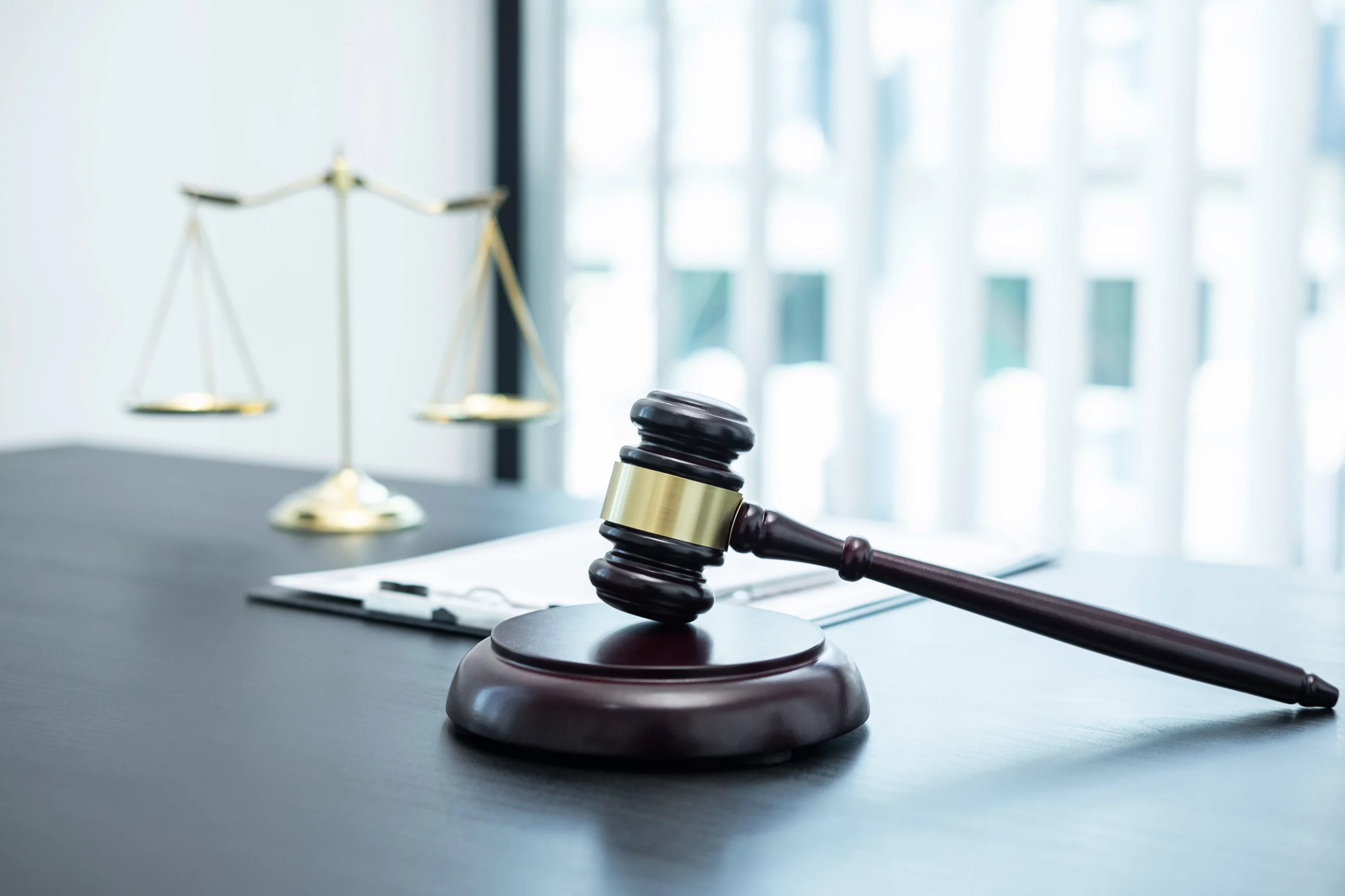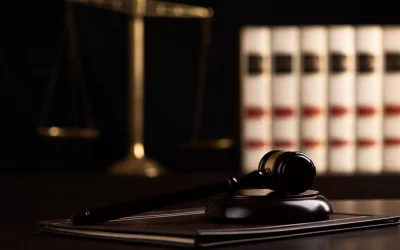After a car accident, who is eligible for compensation?
Anyone injured in a car accident has the right to file a lawsuit against the at-fault motorist. In the event of children or incompetents, the lawsuit must be filed via a court-appointed guardian, usually the injured minor’s father.
When a motorist is at fault, it is not necessary to be a citizen of Colorado or even the United States to file a claim for bodily injury. This article will solely cover situations involving drivers and vehicle owners. Accidents maybe caused by various factors, including unsafe routes, product manufacturers, repair shops, and a variety of other organizations.
The wounded plaintiff’s spouse may also file a case for loss of consortium damages, which are damages for the injured plaintiff’s loss of society, comfort, and care. See the Damages section of this page for further information.
The Fault Requirement is a requirement that must be met.
No-fault legislation has never been implemented in Colorado. As a result, before someone may be compensated for damages caused by a car accident, it must be determined that another motorist, person, or business was to blame.
Is There Anything You Can Do If You’ve Been Hit by More Than One Car?
Motor vehicle accidents are often caused by many causes, and many drivers may be at fault. A lawsuit against all at-fault drivers may be initiated in this circumstance.
The different parties then seek to sort out the proportion of blame attributed to each defendant throughout the claim or lawsuit. If the matter does not settle, an arbitrator, judge, or jury may be called upon to decide the proportion of the blame.
According to Colorado law, a person determined to be at blame, regardless of how little the percentage of guilt, is liable for all of the victim’s economic damages, including past and future medical costs and lost wages. However, with the passing of Proposition 51, a wrongdoer is solely liable for the plaintiff’s pain and suffering damages depending on the proportion of guilt he or she bears.
As a result, if Ms. Anderson is a passenger in a vehicle driven by Mr. Sorenson who is speeding and collides with a car driven by Mr. King who has run a red light, both Mr. Sorenson and Mr. King will very certainly be held partly at responsibility for Ms. Anderson’ injuries.
Suppose a judge, arbitrator, or jury finds Mr. Sorenson to be 80% at fault and Mr. King to be 20% at fault. In that case, Ms. Anderson’s recovery will be affected as follows: if Ms. Anderson has a total of $100,000 in medical bills and $100,000 in wage loss, she will be entitled to recover the full amount of the bills and wage loss from either defendant is known as joint and several liabilities.
Mr. King would only have to pay $200,000 (20 per cent) for pain and suffering damages if an arbitrator, court, or jury awarded Ms. Anderson $1,000,000 for pain and suffering damages, and Ms. Anderson would have to recover the remaining $800,000 (80 per cent) from Mr. Sorenson.
WHERE DOES IT STOP IF THE PLAINTIFF IS PARTIALLY TO BLAME?
Even if the plaintiff is somewhat at fault, he or she may be able to recover. Colorado is a comparative negligence state, which means that a negligent plaintiff may obtain damages, but the amount of money recovered is lowered by the degree of culpability he or she bears.
For example, if a judge determines that a plaintiff’s losses should be assessed at $1,000,000, but the plaintiff is found to be 25% at blame, the plaintiff’s award is reduced by $250,000 to $750,000.
$750,000.
THE METHOD BY WHICH FAULT IS DETERMINED.
The trier of fact determines the fault.
In the end, the trier of fact, whether an arbitrator, judge, or jury, decides who is responsible and what proportion of fault they are responsible for. Their judgements are based on a thorough examination of all the facts and evidence in the case, which they must apply to the law while debating and reaching a conclusion.
The law of negligence determines who is at fault.
Jurors will consider several issues of the law while making their verdict. There’s the law of negligence, for starters. This simple norm asserts that drivers have a responsibility to behave fairly and sensibly while driving a motor vehicle. Negligence is defined as failing to behave reasonably and sensibly.
A breach of the Vehicle Code may be used to assess fault.
In addition, Colorado has a comprehensive vehicle code that lays out a slew of rules that drivers must follow while driving motor vehicles. In an accident scenario, there are potentially hundreds of statutes that might apply. These regulations would ban driving too fast for the circumstances, performing an unlawful u-turn, passing illegally, failing to stop at a stop sign or red light, and so forth.
If a plaintiff can show that a defendant broke one of these statutes, a judgement of wrongdoing will almost always be made, as long as the violation contributed to the accident and the plaintiff’s injuries.
Certain types of motor vehicles are subject to special laws.
In Colorado, particular rules govern the usage of certain kinds of motor vehicles on public roads. You may see some of them here.
Big Rigs and 18-wheelers
Vehicle operators will normally be subject to particular restrictions based on the truck’s size and the number of wheels. Certain sections of Colorado roadways are truly off-limits to large vehicles. On certain roadways, their usage is restricted to specific lanes.
Furthermore, suppose the vehicle is a tractor-trailer. In that case, there are special laws on how it must be identified, connected and how certain truck activities, such as headlights and taillights, must function.
Commercial vehicles must meet specific inspection requirements, and federal law limits the length of hours a driver may drive without stopping.
Furthermore, before being authorized to drive a vehicle unattended, commercial truck operators must earn and maintain specific permits and complete demanding exams.
If any of this legislation or rules were broken due to an accident, it might be highly helpful in proving an injured person’s case. It may benefit the truck driver in his case for damages against another motorist if the person wounded in the collision is a truck driver who follows all of these rules and regulations.
A trucking business will nearly always be found liable for the negligent behavior of a truck driver under the law.
Taxicabs are subject to additional regulations.
Taxis are classified as “common carriers,” or corporations that carry people for a fee. Since
taxicab firms earn from passengers and passengers are fully reliant on the taxicab company for their safety, taxicab companies owe passengers the greatest legal duty of care. This implies they must drive with more care than regular motorists, and even the tiniest act of negligence will be prosecuted.
Aside from respecting the standard laws of the road, case law has found that taxicabs have a responsibility to ensure safe access into and out of the taxicab to passengers. For example, a taxicab cannot pick up a passenger in the center of the road, forcing the passenger to walk from the curb into a traffic lane to reach the taxicab. Furthermore, the taxicab will not start until the passenger is properly seated and strapped.
Furthermore, a taxicab driver cannot let a passenger out amid a traffic jam. The operator has a responsibility to ensure that the passenger is left off in a safe location where he or she may safely walk to a curb or driveway.
A taxicab firm will nearly always be found liable for the negligent conduct of the taxicab driver under the law.
Buses have their own set of rules.
Buses, like taxicabs, are considered common carriers and consequently owe their passengers the greatest legal duty of care. Furthermore, case law has established that a bus operator is responsible for providing a safe chance for a passenger to board the vehicle and get to their seat or position of standing before pushing the bus ahead.
Before starting up the bus, bus operators, like taxicab drivers, must ensure that all passengers have safely exited the vehicle and are at a safe location. The bus driver cannot drop off a passenger in the middle of the street or another potentially unsafe location.
Furthermore, when a passenger enters or exits the vehicle, the bus operator must not shut the doors on them. Some buses have unique machinery that stops doors from shutting if a person is
in the way; unfortunately, this system malfunctions regularly. In such a case, the bus firm would be responsible for negligent operating and negligent maintenance of the vehicle.
Bus drivers, like truck drivers, must have appropriate permits and training to operate a bus. Buses are difficult to maneuver, and novice bus drivers regularly cause collisions.
Almost every act of carelessness by the bus driver will be held accountable by the bus business. Motorcyclists have their own set of regulations.
Motorcyclists must obey the same regulations as other drivers in Colorado, with a few exceptions.
Motorcyclists are permitted to pass between cars stuck in traffic as long as they can do so safely since the law acknowledges that it is harmful to them to repeatedly start and stop on roads, much to the dismay of other drivers. Most other drivers are unaware that these activities are lawful. A rare example of road rage results in a significant injury to a motorcycle when a motorist deliberately opens a car door into the path of a motorcyclist.
Motorcyclists must obtain specific permits and pass examinations demonstrating that they can safely operate a motorbike.
Although motorbikes are more difficult to notice than other vehicles, drivers have the same responsibility to identify a motorcycle and behave responsibly as they would any other vehicle.
Motorcycle riders in Colorado must wear helmets and have headlights that fulfil certain requirements.
Bicyclists have their own set of regulations.
When evaluating whether or not a Vehicle Code law has been broken, a bicycle is considered a “motor vehicle.” Bicyclists have the same obligations as motorists, such as not speeding, stopping at stop signs and red lights, not turning without signaling, and so on.
Bicyclists must also obey additional restrictions, such as staying as near the curb as possible rather than on the sidewalk if they are riding slower than the speed of cars.
They must utilize a bike lane if one exists, except while turning. There are extremely specific requirements about the light and reflectors that must be present on any bicycle operated at night. The Colorado Vehicle Code requires that each new bicycle be marketed with unique reflectors and lights.
Adult bikers are not required to wear helmets, but any youngster under 18 must do so while riding a bicycle.
Bicyclists are afforded certain legal safeguards, such as requiring motor vehicles to keep out of a bicycle lane unless the lane is clear and the driver is making a turn.
What Is Evidence Taken into Account When Determining Fault? Officers of the law and police reports
One of the most prevalent misunderstandings about how Colorado cases are determined is that the general public and many lawyers believe that a fact-finder uses the judgments of a police officer who examines an accident in assessing liability. This isn’t correct. The police officer’s judgment of guilt and the police report is not admissible as trial evidence.
However, insurance companies place a high value on the police officer’s judgments when considering claims, and the police record is admissible in arbitration. (Arbitrations are “mini-trials” by a retired judge or lawyer.) Depending on the situation, arbitration judgments may or may not be binding.)
Even if a police officer’s views on blame will not be used in court, the officer’s observations, measurements, and evidence collected at the trial site, as well as the statements taken from witnesses, including the drivers, may be used in court.
Eyewitness testimony is a kind of testimony given by those who have seen something.
Suppose there is an independent eyewitness to an accident. In that case, the witness’s comments and evidence will be crucial and carefully considered if the witness is non-biased, trustworthy, and had a chance to see key components of the event.
The plaintiff’s and defendant’s evidence will be crucial; nevertheless, jurors are permitted to weigh the witness’s prejudice, and parties are often assumed to be biased in their favor.
The tangible proof.
The position of the cars at their point of rest (i.e., the place where they eventually stop after the accident), the damage to the vehicles or other physical evidence like as skid marks, debris from the vehicles, and the location of shattered glass may all be used to establish blame.
Cases involving motor vehicles are investigated.
An early and comprehensive investigation is crucial in every motor vehicle case involving a significant injury or the potential for a serious injury. A skilled plaintiff lawyer should employ an investigator to attend to the accident site right away.
Even if a police report is not completed, it is normally desirable to send a private investigator to the accident location as soon as possible after the accident to record the status of the accident scene. However, it may be difficult to do so without a police record. If the accident victim can not recall how or where the accident occurred, there is typically some indication.
Skid marks fade rapidly; debris from the cars may be blown away or cleaned up; if a hazardous condition on public or private land is partially to blame for the accident, the property owner can swiftly correct the situation.
After obtaining the police report, the private investigator must return to the site, often accompanied by an expert witness such as an accident reconstruction expert, to verify the correctness of the police report and fill in some of the essential areas that the police report may not include.
Most police officers detest producing lengthy reports since they feel that they are merely doing the business of insurance companies or plaintiff’s attorneys when they clear an accident swiftly. As a result, they tend to make estimates rather than taking actual measurements and, as a result of their haste, will fail to identify and interview all witnesses and make mistakes on the report.
When accident reconstruction specialists are subsequently engaged to assist establish culpability, an incorrect measurement of a few inches might be the difference between a plaintiff winning or losing a lawsuit.
A missing eyewitness might supply crucial testimony to make or break a case. As a result, all reasonable efforts should be taken to find all potential witnesses. Furthermore, a witness’s testimony to the authorities can never be trusted. A police officer will normally spend five minutes interrogating a witness while scribbling down notes, while a private investigator will spend five minutes interviewing a witness while scribbling down notes.
A plaintiff’s attorney’s investigator may wish to spend many hours with the witness, going through his or her testimony in detail.
One thing is certain: the insurance company investigator will be at the site within hours if not minutes, after the other motorist reports the collision.
How Soon After an Accident Should a Serious Personal Injury Case Be Filed?
Although there are few exceptions, a lawsuit for severe personal injury in Colorado must be filed within two years of the date of the accident or occurrence. In certain circumstances, the time limit is extended to two years from the date of discovery of the crime or harm.
However, use caution. If the claim is against a government organization, it must be filed within six months after the accident. Minors have until their 19th birthday to file a lawsuit, except for medical malpractice and actions against government bodies.
Experts in the Determination of Fault
In a car accident case, several specialists may be called in.
The parties to a dispute often engage experts to try to convince an arbitrator, judge, or jury on the question of fault. Accident reconstruction specialists, mechanical engineers, human factors experts, biomedical accident reconstruction, and biomedical engineers and photogrammetry experts are only a few of the experts that may testify in a motor vehicle lawsuit.
What will specialists use to form their opinions?
To some degree, the accident reconstruction expert witnesses will depend on the testimony of witnesses and participants to get their judgments about the causative factors in an accident; nevertheless, they will rely on the physical evidence available for inspection the majority of the time.
The length and pattern of skid marks, as well as the kind and quantity of motor vehicle damage during a collision, may often reveal a vehicle’s speed. The exact point of collision is often disputed. However, it may occasionally be ascertained by the debris placement, such as smashed glass and metal, left behind after the cars come to a halt.
Experts in human aspects
The human factor is a field of study that most laypeople are unfamiliar with, yet it may be crucial in assessing blame in a car accident. People with a background in engineering and psychology are known as human factors specialists.
They may testify about how drugs or alcohol might affect a driver’s perception and response time and how a vehicle driver should respond if he or she detects a hazard.
Biomedical and biomechanical engineers are employed.
However, their evidence is often more essential in proving causation than responsibility.
Photographic Experts
If the damages merit it, the parties may retain photography specialists who will try to construct a sequence of images, a film, video, or computer animation/simulation to mimic the accident and explain to the jury things that the parties feel will assist them to win their case.
For example, if one side is attempting to demonstrate that he or she did not have enough time to avoid an accident, that side may attempt to produce a film demonstrating that the other vehicle flashed in front of the driver, giving the driver no time to perceive the danger and take appropriate evasive action. These replicas might be quite expensive, but they are very helpful.
Experts are unable to provide views on culpability.
Expert witnesses, including police officers, are unable to express their judgments on who is at blame. They may only attest to the accident’s causing circumstances. The trier of fact can only decide the ultimate fact concerns in a case.
Insurance protection. At-fault driver’s insurance.
In motor vehicle accident cases, insurance coverage becomes critical unless the defendant is a major organization, a government agency, or a person with considerable assets. Although a plaintiff may sue someone or a firm for more than their insurance policy covers, collecting in such a lawsuit might be challenging.
Unless a settlement demand for the policy limit is made and the insurance company unreasonably refuses to pay it, a plaintiff may only collect damages up to the policy limit of an at-fault driver’s insurance policy. Suppose the insurance company is determined to be acting in bad faith. In that case, the policy limit will be “opened up,” and the plaintiff will be able to collect the entire amount of the judgement or arbitration award from the at-fault driver’s insurance company.
Coverage for uninsured and underinsured motorists.
Unfortunately, many individuals in Colorado are either uninsured or have very limited insurance coverage; as a result, a victim may need to rely on his or her insurance policy to offer or supplement insurance benefits.
An unlicensed or underinsured driver lawsuit is inevitable. The plaintiff may sue his or her insurance carrier for up to the policy limitations if the other driver is found to be at fault. The plaintiff’s insurance company effectively takes over the role of the uninsured motorist’s insurance company.
A plaintiff may sue his or her insurance carrier to recoup the difference between the at-fault
driver’s policy limit and the plaintiff’s. For example, if the at-fault motorist had $100,000 insurance, but the plaintiff’s losses were worth $500,000, and the plaintiff had a $50,000 policy, the at-fault driver would be liable.
Plaintiff may collect $200,000 from his insurance carrier under a $300,000 underinsured motorist policy (the difference between the at-fault driver’s $100,000 policy limit and plaintiff’s $300,000 policy maximum).
In uninsured or underinsured motorist claims, a plaintiff’s proportion of culpability will diminish his or her award, just as if the plaintiff were suing the other driver.
Uninsured and underinsured driver cases are usually settled via binding arbitration rather than trial.
To obtain general damages, the plaintiff must have liability insurance.
A motorist in a car who does not have insurance coverage is not eligible to seek damages for pain and suffering from the other driver under Colorado law.
IN MOTOR VEHICLE CASES, COMPENSATORY DAMAGES
Plaintiffs may collect past medical expenditures, future expected medical expenses, past wage loss, predicted wage loss, and past and future pain and suffering in a motor vehicle accident action.
Physicians’ or other healthcare professionals’ testimony calculates medical expenditures. An economist or an industry expert often determines the amount of future pay loss; however, no expert can attest to the worth of pain and suffering.
Pain and suffering, which includes emotional anguish, is usually the most substantial component of a plaintiff’s damages. Contrary to common opinion, there is no formula for calculating pain
and suffering awards and they vary widely from case to case based on the location of the case, the severity of the damage, and the quality of the case presentation.
DAMAGES FOR PUNITIVE REASONS.
Suppose a plaintiff can show that the wrongdoer’s actions were false, malicious, or disgusting. In that case, the plaintiff is entitled to punitive damages, which are meant to punish the offender and set an example for the rest of society. The emphasis of this sort of litigation is usually on the defendant’s misbehavior rather than the plaintiff’s damage.
Punitive damages will vary based on the severity of the defendant’s misbehavior and its financial situation. The law understands that huge corporation must pay more in punitive penalties than small corporations or individuals to be effectively punished. Punitive damages are routinely given against intoxicated drivers in car accidents.
CLAIM FOR CONSORTIUM LOSS.
A plaintiff’s spouse may claim ‘loss of consortium’ and receive damages. A spouse is entitled to compensation for the loss of society, comfort, and care caused by the injured spouse’s inability to care for the plaintiff due to their injury and to have to watch the plaintiff suffer. A spouse must be identified as a party to the action and must have been married to the plaintiff at the time of the accident to claim these damages.
The benefits and drawbacks of pursuing a loss of consortium claim should be examined with an attorney before proceeding.
THE ATTITUDE OF INSURANCE COMPANIES TO MOTOR VEHICLE CASES.
Insurance companies have adopted a considerably tougher position in recent years when deciding how much to pay in settlements for automobile accidents. Even when their insured is plainly at fault, insurance companies often refuse to pay all of a claimant’s medical expenditures.
Insurance companies are ready to spend more money on lawyers, specialists, and other fees to take a case to trial than they are willing to spend on a settlement in instances involving relatively modest personal injuries.
The insurance companies are aware that the plaintiff and his or her attorney, for example, cannot afford to spend $10,000 on expert expenses and witnesses to win a case that may be worth just a few thousand dollars.
$5,000. As a result, many vehicle accident victims do not obtain enough compensation for their injuries.
Unfortunately, jurors in Colorado have grown quite suspicious of minor vehicle accident claims, which is one of the reasons why this insurance industry tactic is succeeding. Jurors typically do not pay the entire amount of a plaintiff’s medical expenditures, and they frequently award little or no money for pain and suffering. In circumstances of unambiguous liability, jurors may occasionally rule in favor of the defense when the judgment should favor the plaintiff.
This phenomenon, however, does not occur in catastrophic accident instances with significant injuries.
ARE THERE ANY FACTORS THAT INCREASE THE VALUE OF A MOTOR VEHICLE CASE?
The level of the vehicle damage is perhaps the single most crucial component in assessing the value of a motor vehicle lawsuit. Suppose one or both cars have moderate to substantial property damage. In that case, insurance adjusters, defense lawyers, and, eventually, arbitrators, judges, and juries, are considerably more inclined to believe a plaintiff’s injury claim.
A plaintiff’s believability is a second essential consideration. In a motor vehicle accident lawsuit, a personable and credible plaintiff is more likely to achieve a good outcome.
The objective character of a plaintiff’s damage is the third consideration. An injury that can be seen on an x-ray, MRI, CAT scan, or other mechanical diagnostic technology, or an injury that can be proved during a physician’s examination, is referred to as “objective” in medicine.
“Subjective” complaints, which are just the plaintiff’s self-reporting of symptoms and concerns to the doctor, are not the same as objective proof of an injury. In circumstances where there are objective injuries, insurance adjusters, defense lawyers, and triers of fact are far more inclined to issue big awards and are skeptical of subjective complaints.
For example, Sorenson and Mr. Anderson may be in the same vehicle accident and suffer from the same back discomfort radiating down a leg for a year.
Mr. Anderson, on the other hand, has an MRI that shows a herniated disc pushing on the spinal cord. Mr. Sorenson had a normal orthopedic checkup and a negative MRI.
Even though the accident and symptoms are identical for both claimants, Mr. Anderson will be significantly more likely than Mr. Sorenson to get an acceptable compensation or judgement.
Furthermore, plaintiffs are more likely to get bigger damages from corporate defendants than individuals.
Finally, if a plaintiff can show that another motorist engaged in exceptionally atrocious behavior, such as drunk driving, the plaintiff’s judgement and settlement will almost certainly be raised.
A motor vehicle lawsuit was settled.
Injuries suffered by a plaintiff and their need for ongoing medical care, past and prospective wage loss or loss of earnings potential, and the extent of past and future pain and misery will all affect the settlements of a motor vehicle case.
Furthermore, suppose the case involves a drunk driver or some other egregious act by the defendant. In that case, there is a possibility of “punitive” damages (i.e., punishment damages) against the defendant or a higher compensatory damages settlement because jurors may become enraged at the defendant and award more money. This should, in most cases, raise the settlement value of the case.
In general, given that there is adequate insurance to completely cover a plaintiff’s loss and that the plaintiff has active counsel prepared to prosecute cases, the case should settle for the expected jury judgement value.
The majority of Colorado cases result in verdicts published in weekly periodicals that lawyers read. Attorneys on both sides should forecast what a jury will do in a specific case by looking at what juries have awarded in comparable cases in similar counties.
There is no reason to waste time and money trying the case if both sides can agree on what a jury is likely to award. Instead, the case should be settled for a sum close to the expected jury verdict value.
The majority of auto accident lawsuits settle – at least 90percent of the time — but to earn the maximum settlement amount, a plaintiff must be prepared to go to trial and have an attorney willing to go to trial.
Many plaintiff’s attorneys have little or no trial experience and only want to settle cases. These lawyers will either try to settle the case quickly for a lower price than it is worth, or they will cave in at the last minute because they are afraid of going to trial.
When this happens, the plaintiff is forced to accept the highest offer made by the defendant or insurance company, even if it is completely insufficient. As a result, a plaintiff must hire a lawyer experienced in trial and settlement.
Specialize in situations involving severe bodily and psychological injuries and wrongful death. The company handles catastrophic damage, traumatic brain injury, elder abuse, sexual abuse and harassment, post-traumatic post-traumatic stress disorder, and psychotherapist abuse. For additional information or a free online consultation, please visit JohnWiner.com.










